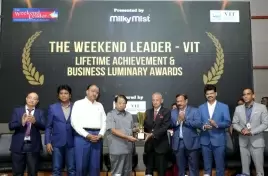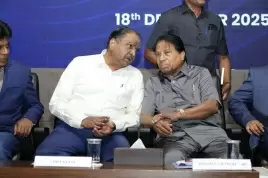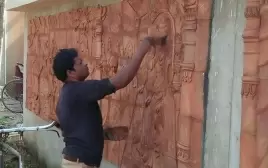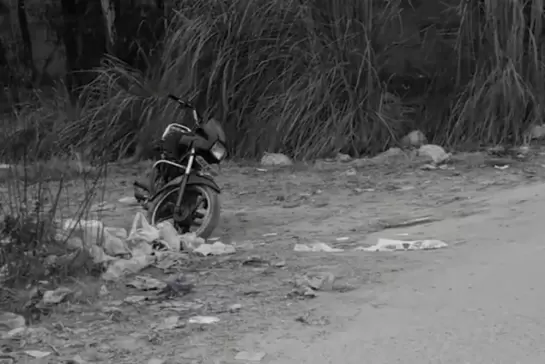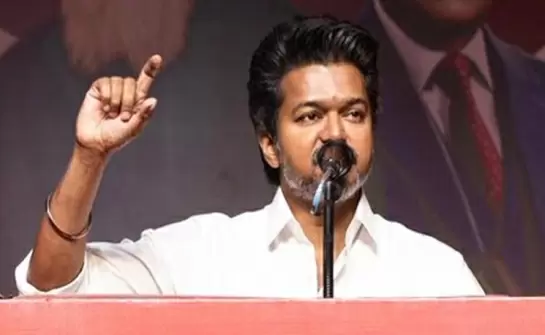Healing survivors of riot through art, Vasudha Thozhur style

23-August-2013
Vol 4 | Issue 34
Image One: A man wearing a bright yellow half-sleeve shirt and red trousers, his black hair plastered down, stands with his wife dressed in a bright pink Bandhani sari, her head covered with her ‘pallu’.
Behind them are small shanties covered with blue plastic sheets. The couple is standing in front of an overflowing gutter. Written in between the shanties is the word ‘Ahmedabad’.
Image Two: A group of children stand on one side of the road gaping at a school. Nearby, as a man reads a newspaper, women fetch water in plastic buckets while in the background heavy vehicles with painted signs like ‘ICDS gaadi’, ‘Red Cross gaadi’ and ‘sarakari ration truck’, ply.
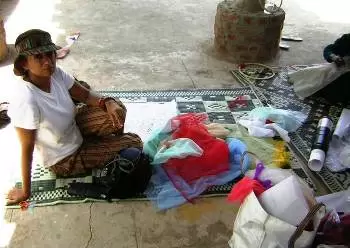 |
|
Vasudha's project with children affected by the Gujarat riots has produced some poignant creations that provide a window into their hearts and minds (Photos: WFS)
|
These are artworks created by some very special students of Vasudha Thozhur, 50, a renowned contemporary artist, who deals with the theme of conflict and violence through her paintings.
Her innovative art project with six adolescent girls from Faizal Park Vatwa in Ahmedabad, Gujarat, who had been caught in the middle of the riots that broke out in the city in 2002, has produced some insightful and poignant creations that not only provide a window into their hearts and minds but have, at one level, had a cathartic effect on them.
It’s been more than a decade since the carnage at Naroda Patiya in Ahmedabad, where residents, including these girls, witnessed unprecedented violence against their close family members, neighbours, friends and acquaintances.
Survivors fled with their belongings settling in a new locality, Faizal Park, Vatwa, on the city’s outskirts. But instead of dwelling over their loss they had to learn to get back on their feet.
The works of these youngsters have been showcased in Thozhur’s latest exhibition, ‘Beyond Pain – An Afterlife’, that was recently held in Mumbai.
Along with her graphic but semi-abstract works in acrylic on large canvasses, which interpreted the massacre and its aftereffects on the victims, there were these paintings that may not bear the finish of professional art but present a slice of life in Vatwa, post-2002, as seen through the eyes of those who had lived through those painful times.
Shahjahan, Tahera, Farzana, Rehana, Tasneem and Rabiya have all lost several members of their immediate family in the carnage and even though today they are grown up women – some married, others working – they all carry the trauma of that period although they don’t talk about it.
They were part of the art project, sponsored by the Indian Foundation for the Arts (IFA), Bengaluru, and initiated by Thozhur, with the support of Himmat, an organisation set up to work with riot victims. The Himmat workshop, in fact, first began in January 2004.
Incidentally, Thozhur has a long and impressive CV that includes several international and national shows at renowned galleries, including Sakshi Art Gallery and Synergy Art Foundation in Mumbai as well as the Cite Internationale des Arts, Paris, in addition to prestigious fellowships and teaching assignments, notably at MSU-Baroda and NID-Ahmedabad.
Of course, it’s her work with the riot victims that has remained closest to her heart. At present she has joined Shiv Nadar University in Noida, as a faculty member to teach art.
Until recently Thozhur was staying in Vadodara, a city around 100 kilometres from the focal point of the 2002 violence. “Although I am not a direct victim, how could anyone remain unaffected by those horrific times? And like several others, soon after the incidents, I, too, participated in many protest morchas. However, I soon realised that something more needed to be done to help the victims and being an artist I could think of only art to communicate with them,” she says.
With this in mind, she joined hands with activist-journalist, Bina Srinivasan, and began visiting the affected communities. She held several discussions with many activists working on the issue, but her participation at that point was only as a concerned citizen. Yet she desperately wanted to do something more.
Recalls Monica Wahi, Executive Director of South Asian Children's Cinema Forum as well as one of the founding members of Himmat, “Vasudha came with Bina, who was associated with us. She had this idea of introducing drawing and painting to children of Vatwa.
“As she wanted to pay the girls who came for the workshop a minimum stipend we decided to seek external funding, though all our activities were previously being funded through our personal contributions.” Himmat assists the new settlers in Vatwa to overcome their trauma.
Says Thozhur, “We didn’t approach the elders to join the art workshop. Besides doing housework, the older women were busy doing stitching work or any other activity that could ensure an income for them. So we spoke to young girls between the age group of 12-18 years. At first many showed interest but later only six turned up for the workshop.”
The girls were paid Rs 30 per day of work – they didn’t come everyday - and that was one real attraction for them.
That was how the girls were wooed and those who didn’t even draw a straight line and had never seen any paints or brushes in their life ended up painting beautiful and explanatory works.
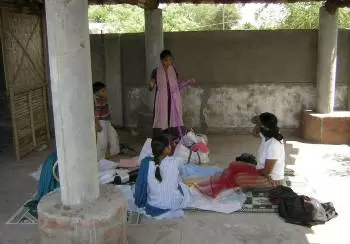 |
|
The art works of the children have been exhibited in Mumbai, Ahmedabad, and New Delhi
|
“They all loved to draw and paint day-to-day incidents rather than their past experiences. And I neither asked them the reason for not drawing those events, nor did I talk to them about those difficult days.
“I don’t think anyone can ever forget the kind of bloodbath these youngsters witnessed. The project wasn’t anyway intended to make them forget their sufferings. It examined the role that art practices can play in a collective trauma and address a range of issues from personal loss to displacement and the possibility of economic revival through the use of visual language,” she adds.
These works have been exhibited in well-known venues like the Hutteesingh Gallery within the CEPT campus in Ahmedabad, the Khoj premises in New Delhi, at a peace festival in Mumbai and at a social forum in Nairobi. Everywhere they have drawn tremendous responses.
Geetha Mehra of Sakshi Gallery puts it this way, “Across the board there has been remarkable appreciation for this exhibition, both in terms of its artistic merit as well as its socio-political content. It’s a powerful show, which gets the audiences thinking. It talks about an after-life once the pain has ebbed.”
Thozhur, too, accepts that in some way her stint with these girls has made her rethink certain aspects of her works.
“I really don’t know how this project helped us; if it was cathartic or not. But the one thing that I do know is that those girls have started expressing their emotions and feelings in a new form and that has made me happy,” she signs off. - Women's Feature Service



